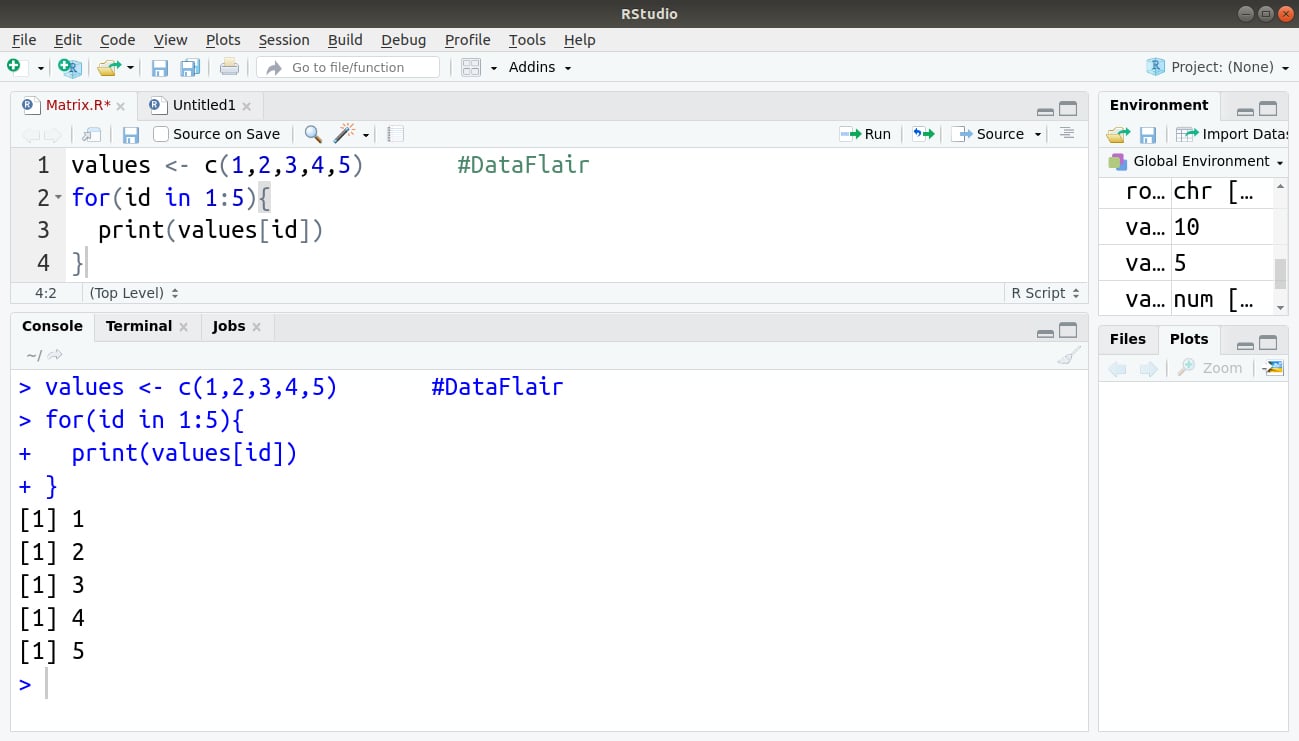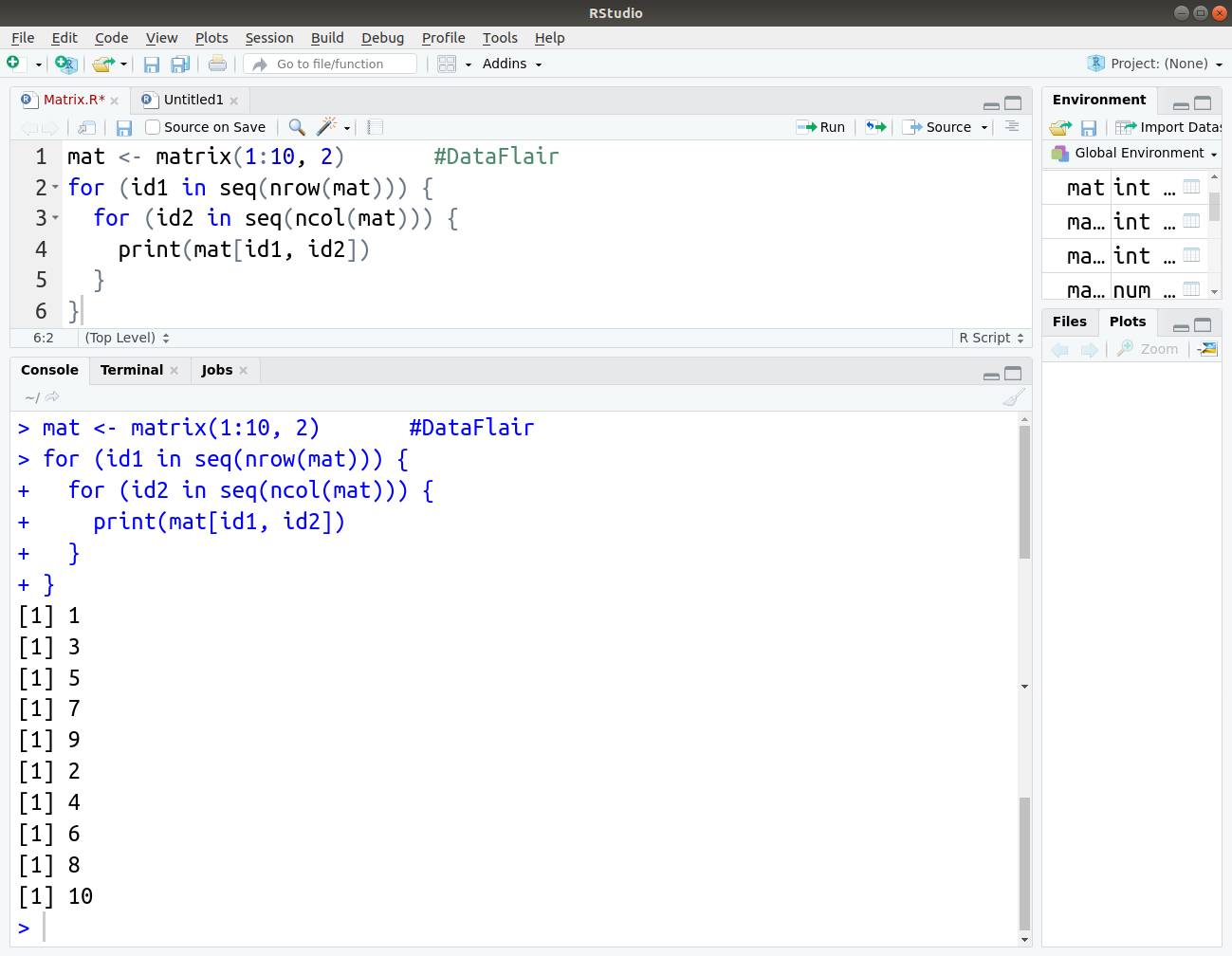


To introduce For loops in R, let us take an example of extracting elements or items from the vector. In the above example, we have specified the condition n = 16 so that the compiler stops the loop when the n = 6 is reached. # illustrating repeat statement to print numbers from 5 to 15 Failing to use the “break” statement will result in an infinite loop. The user needs to define a condition inside the loop, and a “break” statement must be used to exit the loop.
#HOW TO WRITE FOR LOOP IN R CODE#
However, repeat condition is used to iterate over code continuously without a condition check. On the other hand, there is a repeat loop condition, which has similar functionality to that of the loop. In the second example, the sequence has been called until the third element hence the first three elements are printed. In the first example, four elements are called out in the sequence hence all the elements have been printed when the print statement has been executed. In the above example, we are printing out desired elements from the example. # In the below example the fourth element will not be printed. # loop can be stopped with the help of break condition # In case we don’t want the entire loop to be executed # for printing and looping items in example vector Now, let’s see another example using characters. Printing the variable “i” inside the loop gives us with values ranging from 9 to 99. In the above example, the variable “i” is taken by the loop and iterated until the condition is satisfied. # for printing number from 9 to 99 usinf for loop Let’s see how For loop is used to iterate over numerical values. While working in R language, For loops are only looping conditions you will require, rarely there might be a need for other looping conditions such as while. We will further look at different looping examples using functions available in the R library.

In this article, we will investigate the different methods available in R for the purpose of looping. On the other hand, the loops that are based on a set of conditions fall under the while loop family. The looping functions can be divided into two parts, loops that are controlled and can be executed the desired number of times falls under for loop family. Most of the modern programming language has an inbuilt looping function that allows building a function for automation. In simple terms, it’s automating the process by grouping certain required functions in a batch of parts. Loop or iteration, which is basically an instruction to repeat, has its origin dated long back.

How For Loop Works in R?īefore learning how For Loop works in R, let’s see what a loop or looping is. Once the last item or the condition is satisfied, the compiler exists in the loop. Until the condition isn’t matched, the loop goes over and over again. For each item in the sequence, the condition is matched. If there is no condition available, the next instruction after the loop will be executed. While executing a set of commands under for loop condition, the compiler doesn’t start the loop until the condition is specified. The structure consists of initialization shown as “init,” the rhombus, a decision box, and a rectangular box that is the body of the for a loop. Then, the condition is checked, and when the last item is reached compiler exists the loop. First, the loop repeats itself for every item in the sequence until the required condition is reached. Now let’s see the process undertaken by for loop condition with the help of a flow chart. In the above syntax, the vector is represented by sequence, and val is the value of the vector during the For Loop. Hadoop, Data Science, Statistics & others


 0 kommentar(er)
0 kommentar(er)
